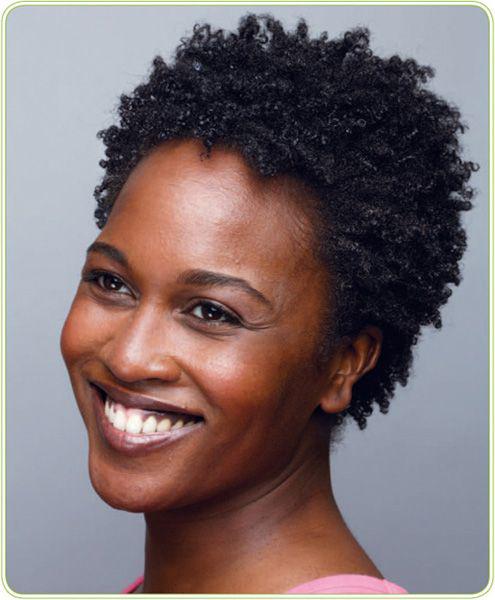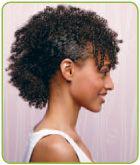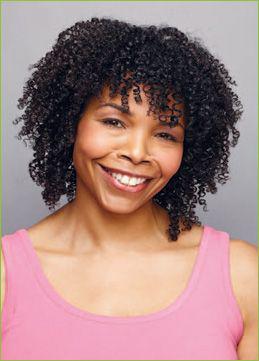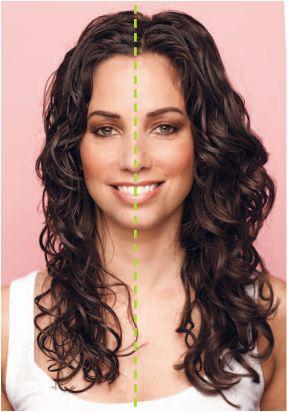B003YL4KS0 EBOK (15 page)
Authors: Lorraine Massey,Michele Bender

If you’re a wavy or s’wavy girl, you’ve probably noticed that the amount of wave or curl you have changes with the seasons and climate. In humid areas and in summer, your waves and s’waves are probably well defined, whereas in arid locales, such as desert areas, or in winter, wavy and s’wavy hair can appear almost straight if you do nothing to it. A few things can help in caring for your curls in wintertime or when you are in dry climates:
•
In arid areas like the desert, a water filter attached to your showerhead is a must. Water tends to be harder in these regions and can leave a gummy residue on the hair.
•
To add extra body to hair, mix gel with your sulfate-free cleanser. Cleanse as directed on
page 52
and rinse well. Scrunch and squeeze with a microfiber towel. Then apply gel again for styling (This really works!) Also, using a hairnet in the shower can keep your wave formation intact.
•
Add extra gel while styling to provide more hold throughout the day. Gel evaporates more quickly in the winter.
•
For a sure hold, allow the product cast to stay firm and let it dissolve and open naturally during the day.
•
Using a blow-dryer with a diffuser or hooded dryer on a medium heat setting can help hair dry more quickly and lock in the curl formation. In this case, use extra gel because the heat will evaporate it. You might want to use a spray gel after drying your hair.
•
Get a top-grade humidifier for your home. This will encourage your curls, and also keep skin from drying out.
•
Spritz hair with lavender spray mixed with gel (see
page 80
for spray-gel recipe) to uplift waves on mornings when you don’t cleanse your hair or to revive waves during the day.
•
If you don’t plan to cleanse your hair the next morning, preserve the formation of your waves by spritzing lightly with spray gel and balling your hair into a bun on the top of your head for the night. Unfurl the next morning.
THE GEL CAST—CLOSED AND OPENWhen your styling gel dries, it crystallizes to set the curl formation—this is why I keep reminding you not to touch your hair while it is drying. In the photograph below, the hair on the left still has a gel cast; the looser, fuller hair on the right has been scrunched to release the cast. The best way to open or loosen the gel cast is to tilt your head to the side or forward and gently scrunch the hair toward the scalp. Do this all around the head.
If you have a big event planned for the evening, you might want to leave in the gel cast all day at work to maintain the set, then release it right before the special occasion. Leaving in the gel cast also helps preserve the hair if it’s raining.
CURL CONFESSIONJessica Lamb-Shapiro
writerMy first hair trauma happened when I was eight. My new stepmother thought my curly hair looked messy and was too hard to comb, so she took me to get my hair cut. I wanted to keep it long, but she wanted to have it all cut off, so we compromised: It would be short in front and long in the back. Little did I know I was asking for the infamous haircut known as a mullet! I burst into tears, and wore a scarf on my head until it grew out.
In college, I saved all my extra money to treat myself to a haircut at a fancy Fifth Avenue salon in New York City. I was convinced that I was going to get a fabulous haircut—that was until I sat down in the hairstylist’s chair and she said, dismayed, “I don’t know how to cut your hair. They only taught us how to cut straight hair.” Then she had a brainstorm: “I’ll blow-dry your hair, and then cut it!” Even straight, the haircut wasn’t great; as soon as I washed it, it was a disaster.
My own attempts to blow-dry my hair were a joke. The best I could come up with was to put my wet hair in a ponytail, so that the top would dry straight and the bottom would dry curly. This made me look a bit as though I’d stuck my finger into an electrical socket, but it was better than nothing.
Then a friend told me about a curly hair salon. The very idea was strange to me, as if it wasn’t a salon if everyone didn’t come out looking like a Pantene commercial. But I loved my friend’s hair, so I thought I would give it a shot. When I first walked in, I was taken aback: I had never seen a room full of curly headed women before. It was like visiting a homeland for curly hair!
As a result, my relationship with my hair is now as easy as it should be. There’s lots of real, unavoidable suffering in the world, and none of it should be about the texture of your hair!

I remember hearing actor Chris Rock talk about the impetus for his movie
Good Hair,
a documentary exploring African American women’s relationship with their locks and the $9 billion industry of weaves, wigs, and relaxers that it has spawned. The idea hit him when his daughter was raving about her friend’s hair one day and when she came home crying because she didn’t have “good hair” another day. When I saw the movie, I didn’t know if I should laugh or cry when several women described their addiction to chemical relaxers as “being on the creamy crack.” These relaxers are made of lye, a corrosive alkaline substance (either sodium hydroxide or potassium hydroxide).
“Eventually I knew what hair wanted; it wanted to be itself . . . to be left alone by anyone, including me, who did not love it as it was.”
—A
LICE
W
ALKER


Besides straightening hair, lye is used as an oven cleaner and drain opener! But African American women
are not alone in their struggles with their hair. We are a multicultural world. It’s not a one-size-fits-all globe anymore, especially regarding hair. We have many multi-curl-tural clients at Devachan Salon, so I decided to hand over this chapter to a convert and expert on the subject, Vida Vladirm, of Devachan.
Though there are exceptions, many ethnic groups have very curly hair. Some of these include Latin Americans, African Americans, Jews, and Italians, but the list goes on and on. Then there are those of us of mixed nationalities who have multitextured hair. But no matter what ethnicity you are, you don’t have to live with dull, dry, brittle locks. What you have can be changed, perhaps not overnight but through persistence. If you want to be free of what I call modern-day slavery to your hair, a lot of patience and large amounts of moisturizing conditioners are key.
Traditionally, we multicultural women have used products that contain petroleum, silicone, waxes, and dry oils, believing that they will control, protect, and hydrate their hair. But rather than being absorbed and providing moisture, these products sit on the hair’s surface, repelling water like a duck’s feathers and attracting dirt. No wonder our hair looks dull and lifeless!
When it’s time for our weekly washing, the first rinse of water that goes down the drain is mucky and brown. It sounds gross, but that’s the dirt that’s been sitting in the hair for a week finally getting flushed out. Typically we cleanse again and apply conditioner, which isn’t on the hair long enough to offer much benefit, especially when the hair has been trapped under heavy petroleum and waxes for a week. Then we reapply those same moisture-robbing products, so the hair never gets the hydration it really needs and deserves. And therein lies (or should I say lyes) the problem.
All curls need moisture, but multicultural curls are
desperately begging
for hydration, especially those curls that are smaller and tighter. And though multicultural hair can appear thick, each strand is actually very fine and weak, so all this gunk we put on our hair and stuff we do to straighten it takes a toll on our hair, not to mention our wallet. I know this all too well because it’s exactly what I did—for decades.
When I was growing up, my hair was braided into two little ponytails or put in Shirley Temple sausage curls at the salon.
Other times, both as a little girl and an adult, I had my hair straightened with a hot comb or flat iron, which more than once was too hot and singed my hair off and caused burns on my scalp, forehead, ears, and neck. I also used to abuse my curls when sleeping by putting in nearly fifty plastic perming rods, with the hope that they would tame and smooth my hair. They were uncomfortable, but my hair was more important than sleeping well. Then one day I realized that it was crazy—as well as hypocritical—for me to tell my clients at the salon to love their curly hair while I relaxed and disguised mine.


